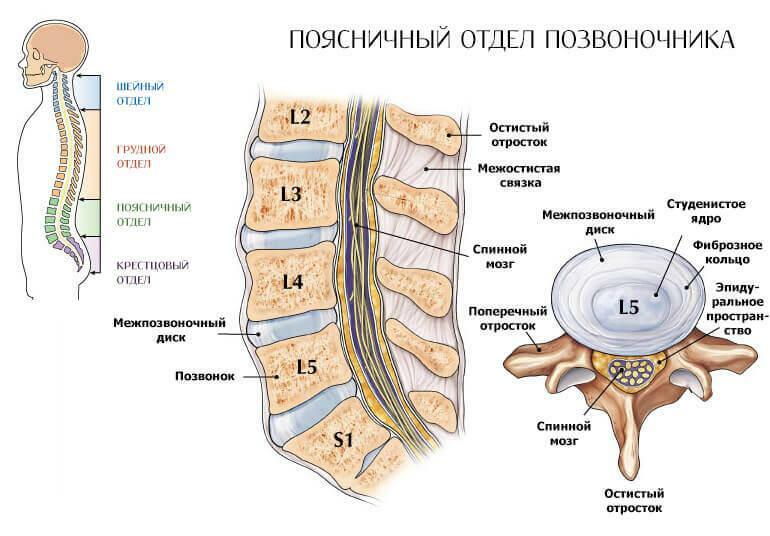Animals rarely suffer from spinal diseases, but a person thus pays for the possibility of erectile dysfunction. Among the most common pathologies are listed such changes as osteochondrosis, protrusions and intervertebral hernias. The greatest burden falls on the lumbar region, which performs a cushioning function. Because of this feature, the intervertebral hernia of the lumbar spine is listed in gloomy leaders.
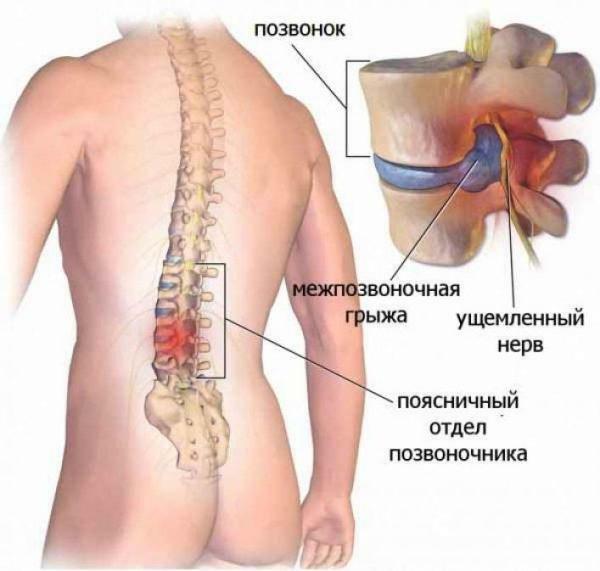
Intervertebral lumbar hernia
Content of material
- 1 What is the intervertebral hernia?
- 2 Aggravating factors in the development of pathology
- 3 Dangerous symptoms
- 4 Diagnosis
- 5 Treatment
- 6 Forecast
- 7 Preventative measures
- 7.1 Video - Intervertebral lumbar hernia: symptoms, exercises
What is the intervertebral hernia?
Each intervertebral disk is surrounded by a fibrous ring, which allows the spine to perform a cushioning function. Due to the uniform load, it is possible to protect internal organs and ensure good health. However, with age or under the influence of external adverse factors, the fibrous ring decreases, and at some point its rupture occurs. After this, the disc protrudes toward the spinal cord, which, even with a large hernia, leads to even pinching of the nerve endings. If the hernia has deviated in the opposite direction, the patient for a long time does not even guess about its existence.

Herniated lumbar disc
Stages of development of negative changes:
- osteochondrosis;
- protrusion( pregraining condition);
- intervertebral hernia.

Changes in intervertebral discs
First changes in the functioning of the spine are almost imperceptible, so people underestimate their danger. Usually specialists are treated when the hernia has reached impressive dimensions. At this stage, treatment is prolonged, and its effectiveness is reduced. In severe cases, surgical intervention is required, since there is a danger to the life of the patient.
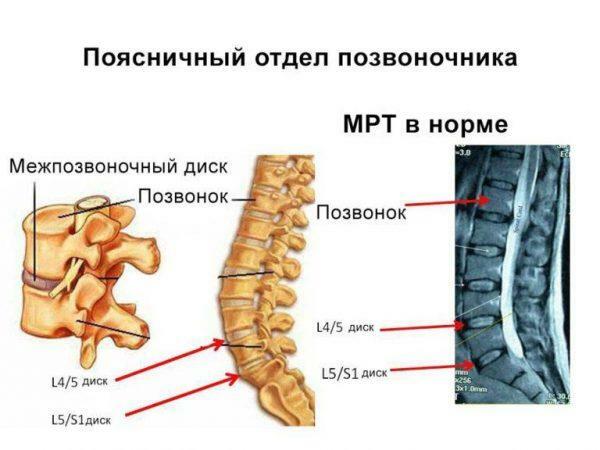
Lumbar spine
Provoking factors in the development of the pathology of
Various provoking factors play an important role in the formation of the hernia. They contribute to the thinning of the fibrous ring and its subsequent rupture.
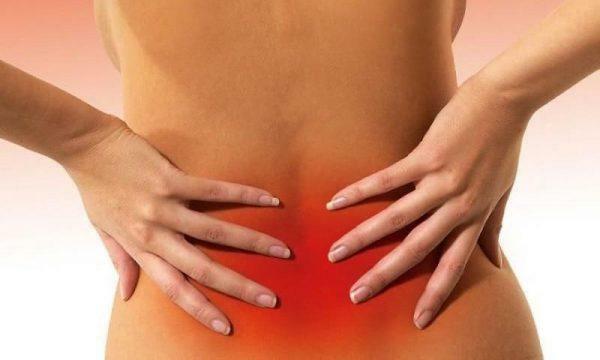
There are a number of factors that cause intervertebral lumbar lumbar spasm
Factors that cause pathology:
- congenital deformities of the spine;
- osteochondrosis and protrusion;
- overweight;
- low physical activity;
- excessive physical activity;
- long stay in one position;
- sedentary work;
- hereditary predisposition;
- age changes in the spine;
- bad habits.
Note! A number of modern professions presuppose a long sitting at the computer, which causes stagnant processes in the tissues. Intervertebral discs do not receive sufficient nutrition, which leads to the development of a dangerous disease. Also under threat is the health of people engaged in manual labor.

How to work properly on a computer
Constant sharp movements, heavy load on the lumbar region - all this leads to a rapid wear of the discs. As a consequence, the rupture of the fibrous ring, severe movement restrictions and even disability.
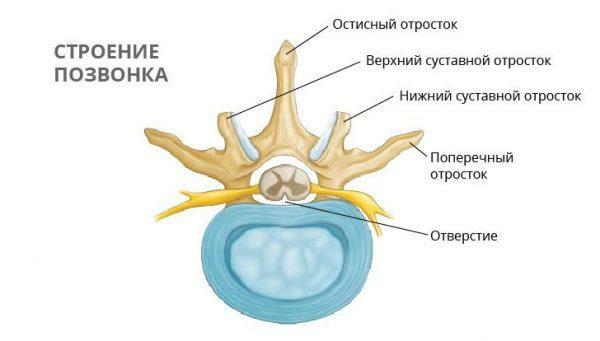
The final is the complete rupture of the fibrous ring and the subsequent loss of the pulp nucleus
. Dangerous symptoms
The main cunning of the intervertebral hernia of the lumbar spine is in its symptoms, which are easily confused with the signs of other diseases. Everything depends on the patient's age, general health and other pathologies.

Symptoms
Symptoms of the intervertebral hernia of the lumbar spine:
- pain in the lumbar region, giving up in the leg;
- feeling of squeezing and discomfort;
- muscle spasm in the affected area;
- numbness of limbs and decrease in their mobility;
- pain when turning and tilting;
- is an inflammation of the sciatic nerve;
- lumbago;
- violation of posture;
- malfunction of the pelvic organs.
A person complains of the impossibility of a long stay in one position, since static causes a strong pain attack. Violated posture, there is a torso in one direction, which is noticeable even with the naked eye. The patient can not fully straighten out, because it gives him severe pain. With prolonged forced standing in one pose, there is a feeling of numbness in the region of the back or lower limbs.

Types of violations of posture
Feature: in the recumbent position, all pain sensations are reduced, and when lifting - increase.
The most terrible thing is a malfunction of the urinary system, which occurs in the late stages of the disease. Man ceases to control urination and defecation, which acquire an arbitrary character. This condition is accompanied by paralysis of the lower extremities, when the patient loses the possibility of independent movement.

The patient can also stop controlling urination and defecation
Diagnosis
Diagnosis usually begins with a patient's interview, visual examination and anamnesis, which allows a preliminary diagnosis. After this, additional studies are required, which make it possible to clarify the extent of the lesion.

Diagnostics of the
Table. Types of examination for diagnosis of intervertebral herniation of the lumbar spine.
| Type of examination | Degree of informativeness |
|---|---|
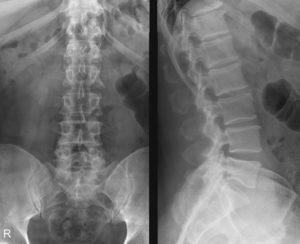 X-ray | Low degree of informativeness. It allows to reveal only changes in bone tissue, and the processes occurring in muscles remain unknown. |
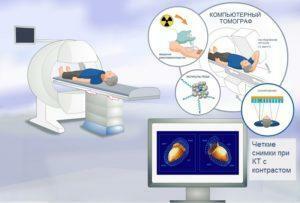 CT | Type of study that displace radiography. Shows the state of bone tissue. |
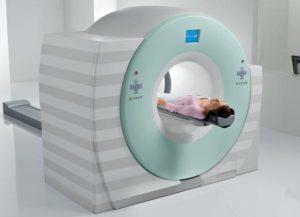 MRI | A modern type of computer diagnostics that allows you to obtain complete information about the condition of the patient's spine. Shows both changes in bones and the condition of muscle tissue. |
In the event of any doubt, a specialist must send a patient to an MRI to determine the extent of the lesion, the size of the hernia and its danger to overall health. If the hernia is characterized by small sizes, then it is possible to select conservative treatment. If the disease is rapidly progressing, an urgent operation may be required.

MTR hernia of lumbar spine
Treatment of
Traditionally, intervertebral hernia is treated with conservative methods. They include taking medications and physical therapy. If an appeal to a specialist occurred at an early stage, then within a month the person will feel a considerable relief. However, you can not relax, as patients after lifting symptoms should constantly perform special exercises that protect against repeated attacks and help to form a good muscular corset.
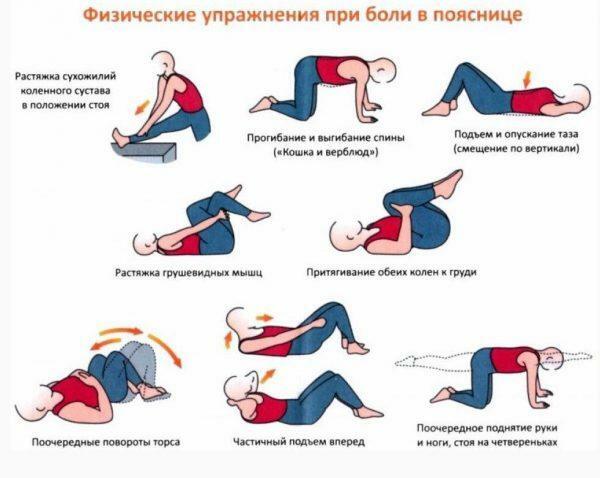
Back Pain Exercises
Important! When the urinary system is affected and paralysis of the lower limbs, surgical intervention is used. It can be traditional or minimally invasive - microdiscectomy. Minimally invasive hernia removal allows for faster recovery, and the likelihood of complication is significantly reduced. The patient returns home the next day after the operation.
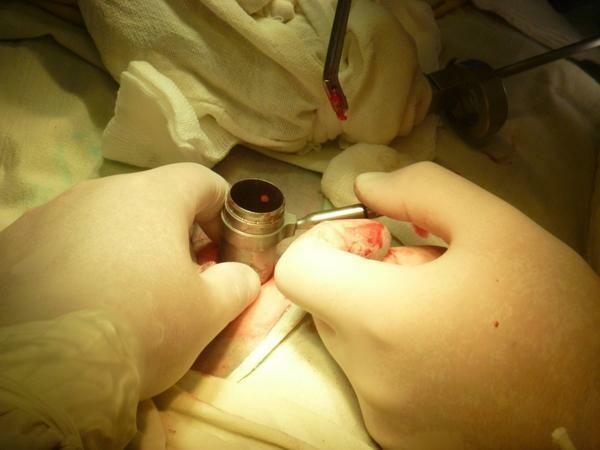
Preparing for lumbar spine surgery
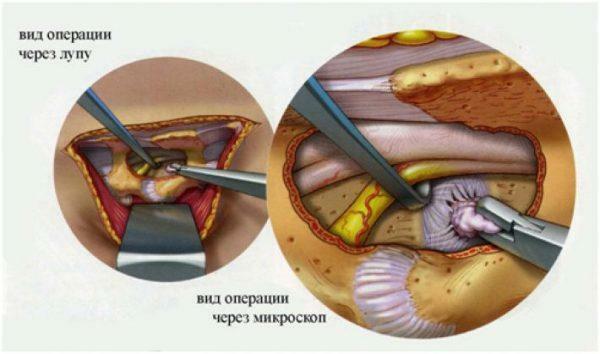
Surgical treatment of lumbar intervertebral disc herniation
Non-steroidal anti-inflammatory drugs or strong painkillers are actively used from medicines. Most commonly prescribed ibuprofen, diclofenac, movalis and some others. Before using any medication, you should consult a specialist, as there may be side effects. It should also be remembered that many non-steroidal anti-inflammatory medications with long-term administration negatively affect the stomach and intestines. Because of this, such drugs are prescribed only to relieve the pain, and the main treatment involves the exercise of physical exercises.
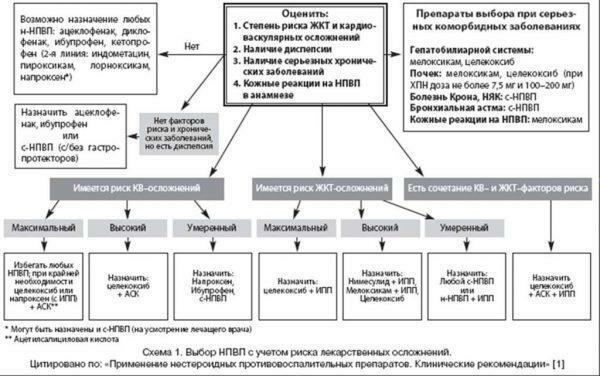
How to choose non-steroidal anti-inflammatory drugs
As an additional therapy, alternative methods of treatment are used that are characterized by varying degrees of effectiveness.
Table. Brief characteristic of alternative methods of treatment.
| The name of the impact method | How is the |
|---|---|
 done Acupuncture | Effects of special needles on active points. It helps to reduce inflammation, relieve painful attack. |
 Manual therapy | Repositioning of intervertebral discs by a specialist. It is effective only in the initial stage of the disease. Contraindicated in the presence of tumors. |
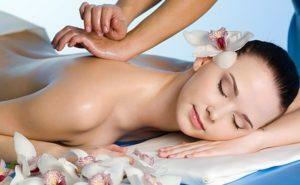 General massage | It is aimed at relaxing the muscles of the back, increasing the general resistance of the body and improving well-being. |
 Wearing a corset | Supports weakened back muscles, relieves muscular tension. Not recommended for permanent use. |
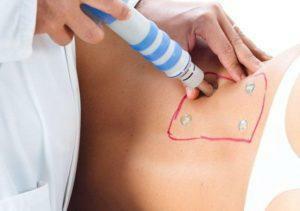 Injection of drugs into trigger points | Introduction of medications at special points in the spine. It is used for one-time help. |
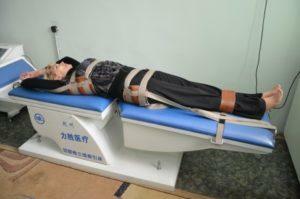 Extension of the spine | Extension of the spine with application of various techniques. An MRI should be performed before the procedure due to a number of contraindications. |
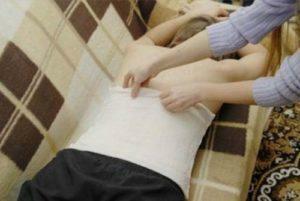 Local exposure to cold or heat | Cold or warm compresses perform a distracting function, short-term improve well-being. |
Alternative therapies are considered to be a good complement to taking medications and performing special exercises. However, one should not get too involved with these methods, as it is possible to cause serious damage to health.

Exercises for lumbar lumbar spine
Forecast
With timely treatment and accurate implementation of all the recommendations of the treating doctor, the forecasts are most favorable. In the case of creating a good muscle corset and avoiding bad habits, it is possible to maintain mobility and activity for many years.
Note! If a person neglects preventive measures, refuses exercise therapy, the disease progresses. Then, surgical intervention, prolonged recovery is required, in addition, the probability of disability is greatly increased.
Preventative measures
Preventive measures allow to avoid attacks of acute pain, slow the progression of the disease and keep activity for many years.
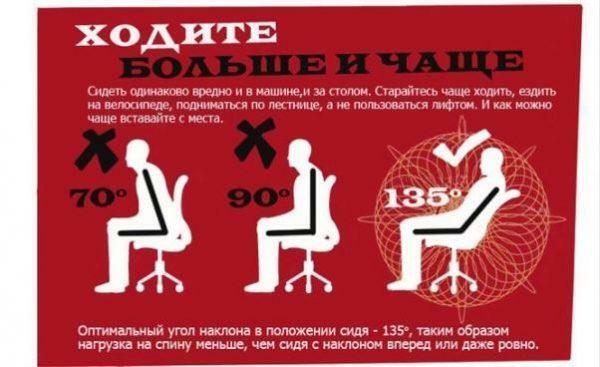
Predisposition to the appearance of intervertebral hernias
The main preventive measures include the following:
- physical activity;
- rejection of bad habits;
- maintaining normal body weight;
- correct lifting of weights;
- control of maintaining posture;
- visit a specialist for discomfort.
Sports, swimming, yoga and dance - all this makes it possible to activate local metabolic processes in the tissues of the back. Control over body weight protects against overloading of intervertebral discs, correct lifting of weights helps to avoid ruptures of the fibrous ring.

Yoga allows the activation of local metabolic processes in the back tissues


